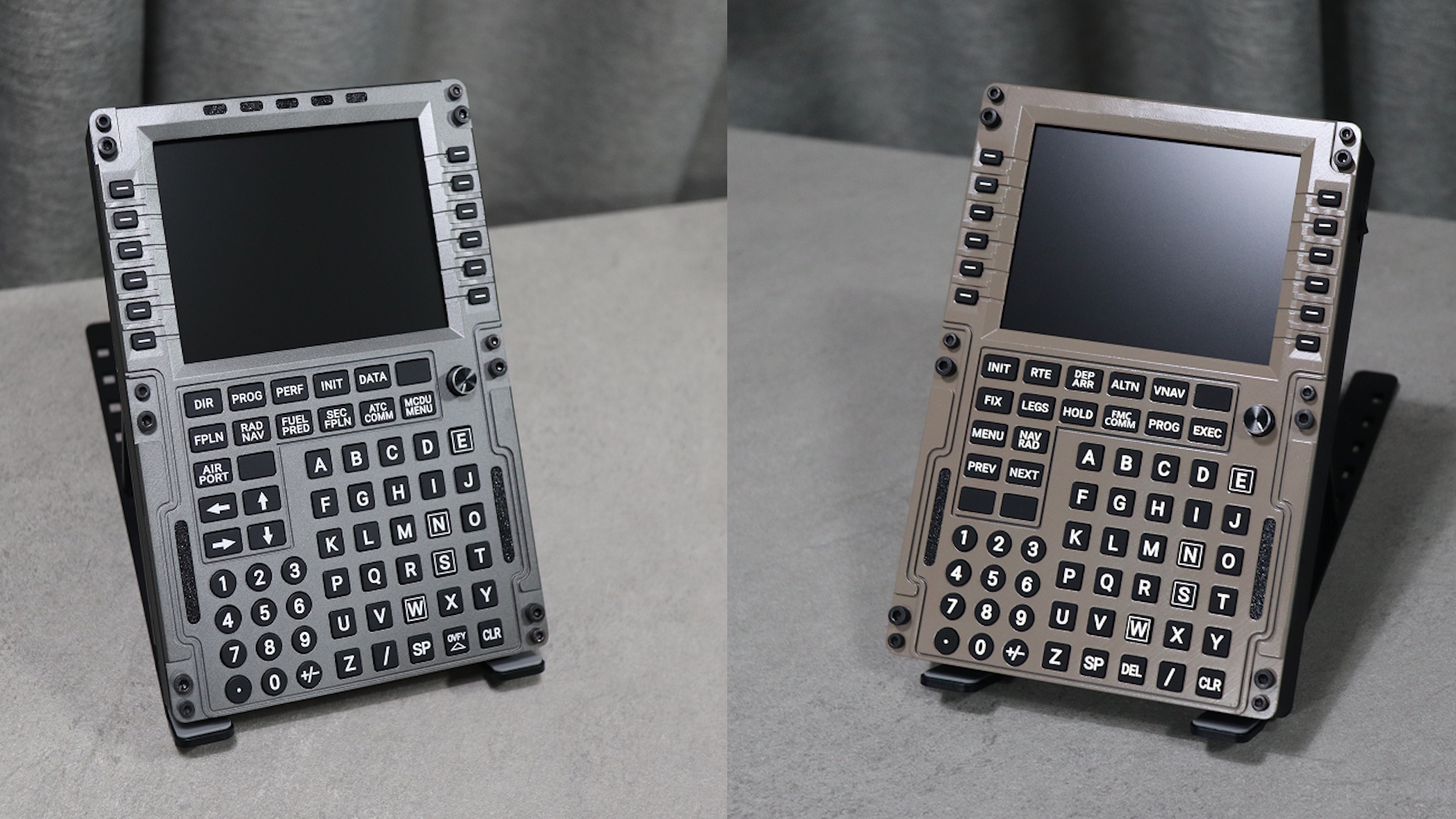Threshold Review: FlyJSim 727 Professional V3
December 4, 2018
Copy Provided
Copy Provided
Introduction
The Boeing 727 doesn’t need much of an introduction. The trijet first took to the skies in 1963 and, amazingly, remained an iconic American workhorse until its widespread retirement in the first years of the 21st century. FlyJSim (FJS) released their first version of the model in the later days of 2012, which was updated to version 2 in 2016. Now, a couple months after the highly-successful release of version 3 on August 10th of this year, it is time to take a step back and analyze the new version in detail.
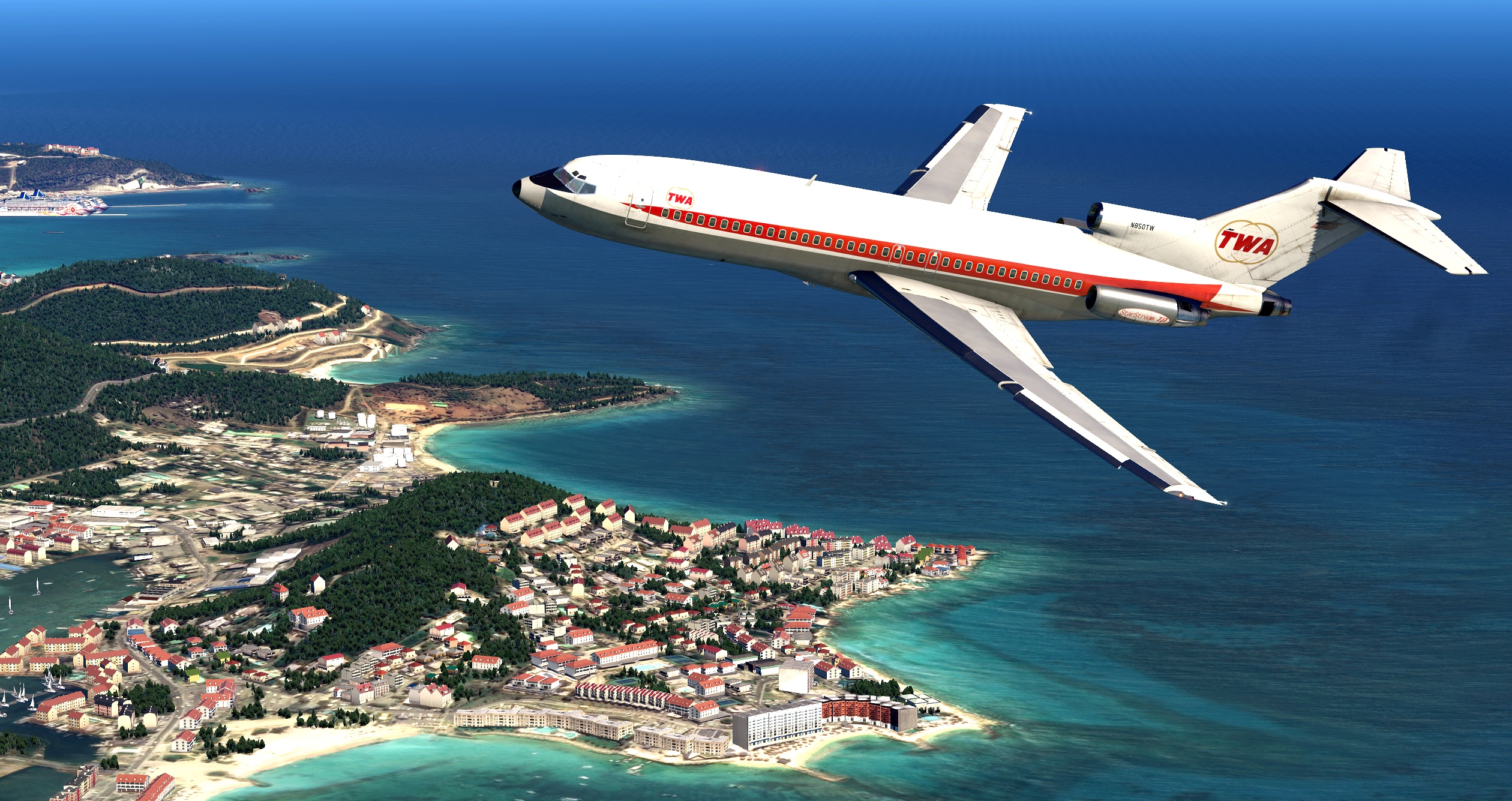
Purchase and Installation
The product comes in 3 separate folders with a fourth download for the manuals.
The aircraft files are approximately 400Mb in size, simply unzip the aircraft folders and move them to your XP11 “Aircraft” folder. That’s it!
Documentation
FlyJSim’s documentation is done by Dellanie Byron, a relatively new member of the FlyJSim team. One of the documents outlines the systems of the 727, another is titled “maneuvers,” and highlights the different functions of the aircraft, the third document goes over the procedures of the 727 and teaches different flow techniques, checklists, and more. The last document contains the full manual.
Visuals (Texturing, Modeling, Animations) & Sounds
The 727 is recognised worldwide for its shape and sound. Let’s take a closer look at FJS’ model.
Exterior
The textures by Chris Valdez are very well done and the modeling is quite nice. However, there are a few issues that we must point out….and hopefully they are addressed at some point by the team.
The wings on the 727 are the location of some visual flaws. The shape and dimensions of the wings appear to be correct, but they lack some details. Specifically, on the real aircraft the APU exhaust is on the starboard wing. In the FJS 727 V3, this is not modeled as the wings are mirrored, visually, which results in an aircraft without an APU exhaust.

Mirrored wings bring with them another issue that some livery painters have mentioned: because there is only one texture that applies to both wings, a painter can’t paint things like aircraft registrations or mechanical notes on the bottom of them. If a painter does this, then the texture will be mirrored to the other wing, meaning that it will be flipped and unreadable on the opposite side. It would be terrific if this aircraft could allow dedicated textures to the wings, so some of the historic liveries appearing online can truly do it justice.
As we take a closer look at the wing, let’s look at the slats. The slats have no underlying mechanism modeling, which makes them look like they are about to slide off the wings when they are extended. It looks quite silly if I’m honest. We also found an animation flaw between wing flex and the slats. When the wing flexes, the tips of the slat surfaces sink into the wing. I’m not certain if this is an issue for Laminar Research or FJS to fix, but it takes away from that lovely clean wing when flexing.
The “slat well” appears to be modeled in a rather basic manner. The inboard slats (Krueger flaps) are divided into three rectangles, the two innermost pieces have curved, retractable tips, whilst the outermost rectangle of the inboard slats doesn’t have a retractable tip; as a result, the slot for the outermost bar has a different shape than the innermost slat pieces. Again, this could be an X-Plane limitation, but it is unfortunate that these visual cues on the 727 are not shown in better detail.



The gear well and landing gear themself are also modeled in a very basic way as well. In the real world the 727 has piping, wiring, fluid storage tanks, and other systems in the gear well. None of this is modeled… The only thing that we do get are photographs of these systems overlaid on the walls of the gear well. In this case, the gear well is closer to an art gallery than an actual 727 gear well so don’t expect modeling detail. The gear doors also lack the pieces and parts that allow them to open and close. Similar to the situation that we had with the slats, it looks a little funny because the doors appear to be just hanging freely.
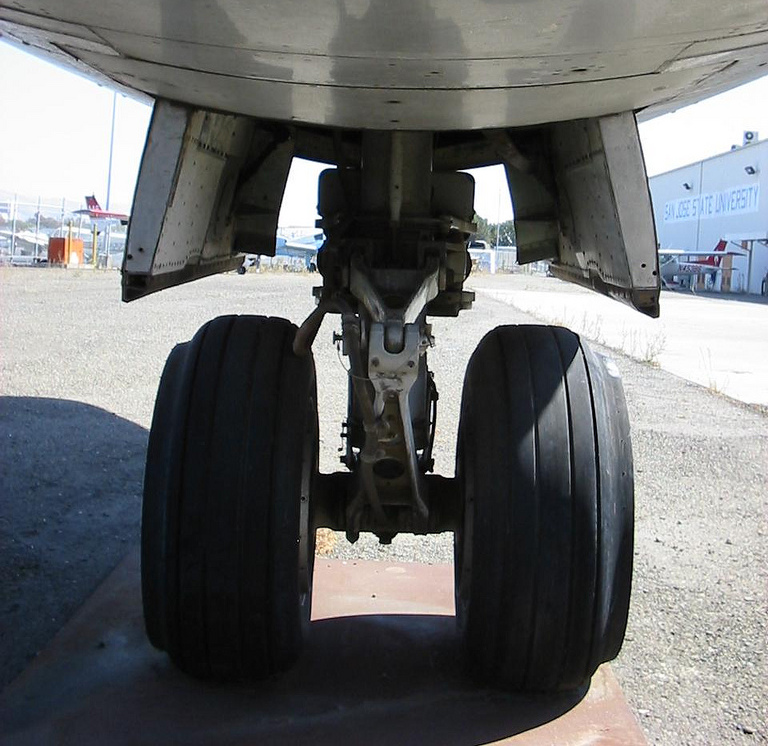
Another detail that I wish could be looked at is the size of the inner, larger eyebrow window. The window should be stretched out wider towards the center of the aircraft and also angled just a tad differently. This is a minor detail but it makes quite a big difference in the appearance of the aircraft so it would have been nice if it had been fixed for version 3.
The general exterior texture work on the 727 is quite good. The aircraft is weathered beautifully with dirt and leaks. The normal maps also reflect this accurately - where there is dirt the normal maps get rougher and don’t reflect as much light just as they would in the real world. The only mild negative that I found was that the aircraft might be a little bit too shiny but this is down to personal preference. I compared the aircraft in the sim to photographs of the 727 in the real world and reflections of the sun seemed a bit to small and too sharp in the sim meaning that the aircraft would need more roughness. I know that many livery painters have created their own normal maps that add roughness for their liveries. For example, MB Liveries did a great job on his rendition of Boeing’s 727 release livery which can be downloaded here: LINK
This aircraft has very clean, sleek lines and this model shows just enough on the exterior…there are “just” enough rivets and show of stringers to give it that bumpy metal object look, but it clearly doesn’t go deep in exterior modeling. The addition of metal shine on textures is a welcome addition, but we still have greyed out windows and very little texturing detail up close on the fuselage.
The rear stairs can be deployed using the key combination Shift+F1 and they look good from a side view….just don’t look too closely, as it is a feature that is not yet finished or was simply added as a quick project…if you look up the stairs you will find the interior sides of the aircraft disappear and you are looking through the side walls….I guess intent is what counts.
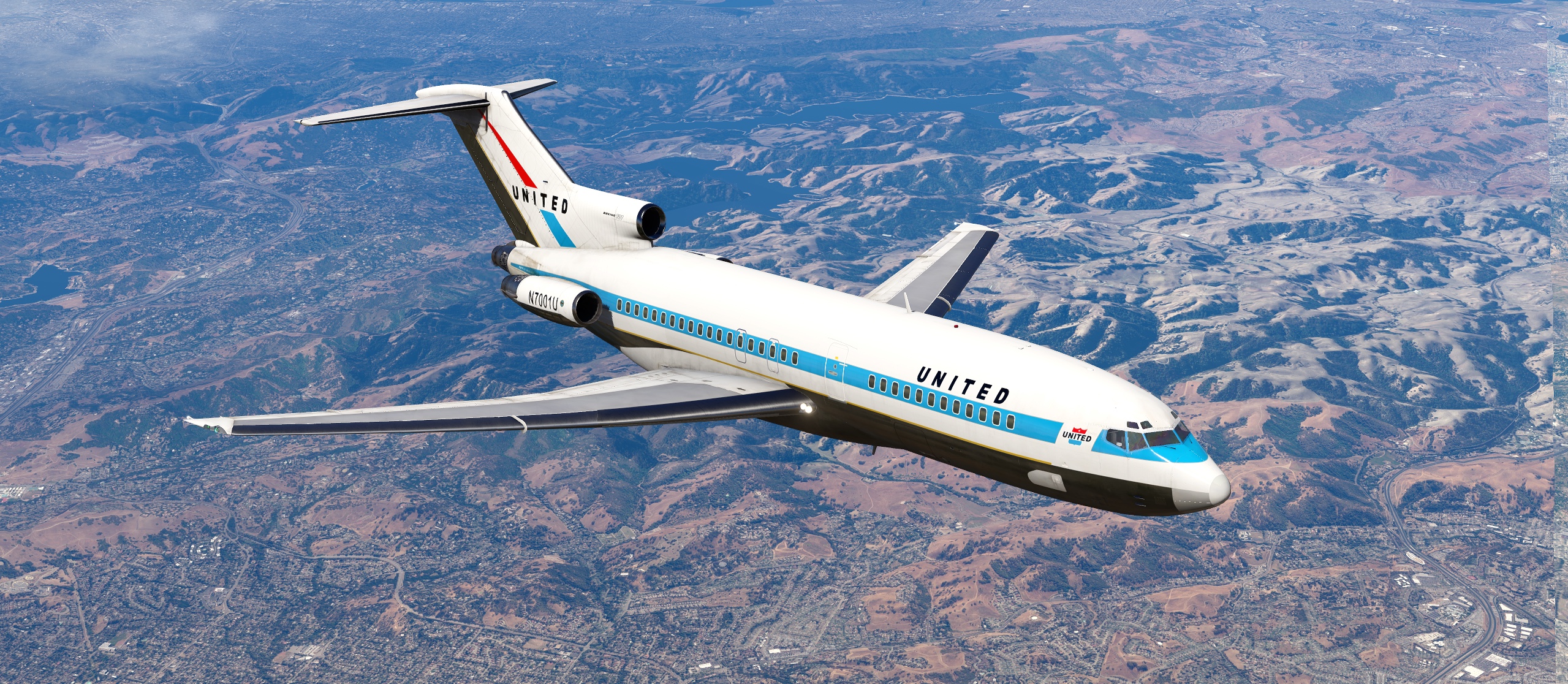
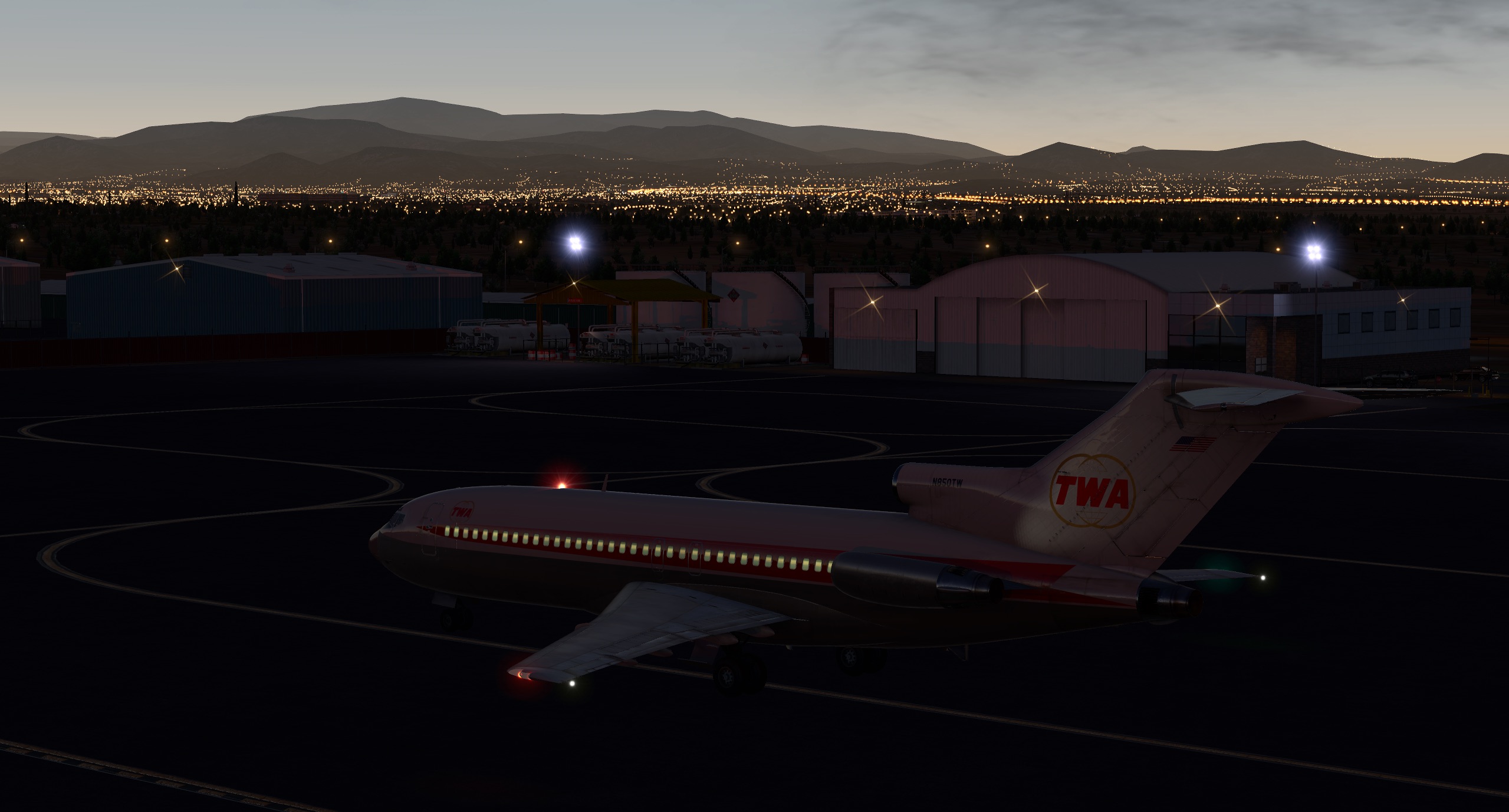
Interior
The interior textures are very good, the cockpit is truly where this aircraft shines. They look terrific during the day and even better at night. FlyJSim took full advantage of X-Plane’s dynamic lighting system along with its physically based rendering engine. They have set up the two systems to work together perfectly at night. The dynamic lights are cast onto the PBR materials, then that light reflects back to your view. The result is phenomenal. On the 3D modeling side of things, I couldn’t find anything wrong except for the circuit breaker panel. It’s just a plain flat image texture that isn’t very high resolution either. It really looks out of place with all the knobs and switches in the classic cockpit, but make no mistake, the rest of the cockpit is indeed very good.
Now onto the cabin, or lack thereof. Personally, the lack of a cabin in this aircraft doesn’t bother me as much as it bothers others. I think that cabins are gimmicks. What percentage of time do you think you are going to spend in the cabin? Probably not much. Because of this, I think that developers shouldn’t spend much time on them so that they can work on other projects or prioritize other aspects of the aircraft. If FlyJSim had included a cabin then development probably would have been extended about half a year. Yes, it’s a ‘cool’ feature, but it’s certainly not the end of the world. Also, FlyJSim would have had to either model the interior of the cargo variant, leave nothing there, or ditch the cargo variant all together (like they did with V3 of the 737-200).

Sounds
The sounds on the 727 were done by Daniela Rodríguez Careri. Daniela has done many sound packages for developers including Aerobask and Skunkcrafts. She also did the sounds for FlyJSim’s previous release, the 737-200 version 3. Since both aircraft use the same engines, the sounds are similar and I can comfortably assume that elements from the 732 are reused on the 727. We’ll start with the exterior sounds. Because fmod was used for the 727, naturally, we get various physical audio effects like doppler effect and flanger. On top of this, the 727’s high quality audio samples create a very immersive audio environment on the exterior. Fly-bys in the 727 are absolutely stunning with its fmod effects and high quality engine samples. The sounds are also very loud, as they should be, and overall, very impressive. The interior sounds are just as good as the exterior sounds, if not better. I particularly love the switch, button, and dial sounds. They are designed with a lot of nuance and do not sound overdone whatsoever. Another notable feature of the interior sounds is the air rushing sound that is always prominent when flying airliners. On many addons this sound is too loud or sounds awkward. This is certainly not the case with the 727. The sound is realistically leveled and it has a lot of bass like it should. The audio will also change a bit as you turn and it really adds to the realism. Overall, FlyJSim hit the target in the sound department.
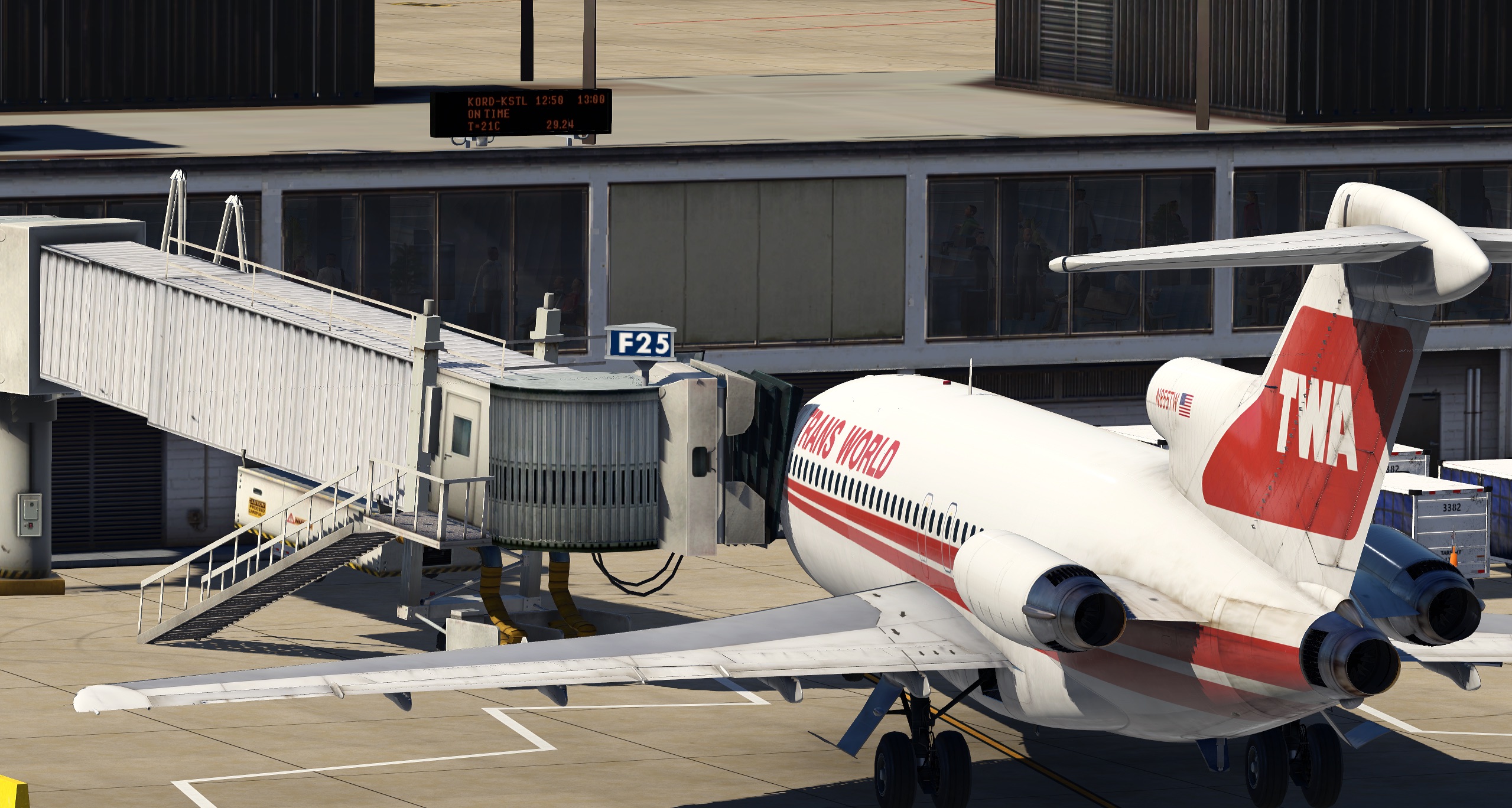
Systems
Because the 727 was designed and built in the Mid-20th century, it doesn’t have as much computerized equipment as more modern aircraft like the Airbus A320. So, the discussion on systems here will be fundamentally different from those of more modern aircraft.
First, we’ll start with the essentials. Fuel flow, fuel burn, stall speeds, and engine start behavior all matched the documentation in the manuals provided with the aircraft and also public documentation from Boeing. I did find a few problems with the overspeed needle being inaccurate but we believe this bug will be fixed soon if not already by the time this review is published.
I also found an interesting feature with the Fuel Low Pressure lights on the flight engineer panel. I was doing a flight that required more fuel than the right and left wing tanks could hold and so I had to put a little bit of fuel in the center tanks. On the ground the Fuel Low Pressure lights for the center tanks were off but when I took off and was established in the climb they turned on since the fuel moved to the back of the tanks.
Now we’ll move to the hydraulics and pneumatics. I was very impressed with these systems as they were overhauled for V3 by Justin Snapp. Just like in the real world, hydraulic systems A and B are separate. System A is powered by the engines and System B is powered by AC electric power. So if the engines aren’t started then nothing that is powered by system A should work like the flaps, outboard spoilers, lower rudder, etc. I have managed to find many other features like this as well. Even though the cabin in FlyJSim’s rendition doesn’t exist visually, it does exist in the systems. For example the automatic cabin temperature control that exists in the real 727 works in the sim. I set the outside temperature to 110 degrees and the aircraft’s air conditioning system slowly cooled the cabin. Next, I set the exterior temperature to -10 degrees and the aircraft slowly warmed the cabin. Another notable function of the pneumatic system is the realistic pack system. PSI drops realistically when the packs are turned on. Also, the PSI builds very realistically when power is added. Overall, I was very impressed with the 727’s hydraulic and pneumatic systems. These systems are very solid and form a critical feature for a vintage airliner.
Next, the navigation equipment. The 727’s avionics are very simple. You have an autopilot, a flight director, NAV 1 and 2 radios, and an HSI. There are options to use the default FMS and the CIVA INS which is sold separately by Phillip Ringler on the org.
This new version of the 727 comes with a NAV/GPS switch in the Captains panel (just above the altitude select control)….this allows you to engage FMS or INS guidance. I have used both of FMS and CIVA INS systems and they link to the FD, AP, and HSI very well, but for the sake of the review I will just be using the NAV radios for VOR (/A) navigation since it is default. First we’ll start with the autopilot. The autopilot in the 727 has a knob from pitch modes and a knob for lateral guidance modes. On top of this there is also a panel with various functions like Altitude hold and heading select. After testing all of them they all seemed to perform accurately according to documentation. It is also worth noting that the autopilot is very smooth and not jumpy. This feels accurate for a relatively large and heavy aircraft.
A more advanced feature of the autopilot system is the auto flare system. The 727 was one of the first aircraft to have this system so, therefore, I think we can safely assume that it wasn’t one of the best. However, when I tried it in the sim it seemed to perform a little too poorly. The aircraft pitched down into the runway at the last second and landed nose wheel first. XTouchDownRecorder, a landing g-force monitor for X-Plane, came out with 4.25Gs when the aircraft touched. Keep in mind that after around 2.1Gs (depending on company policy) the aircraft would need to be inspected thoroughly and all damage would need repair. Above 4 the aircraft would more than likely be severely damaged and passengers would have very serious injuries. I did perform multiple tests of this, so I am certain this behavior was not anomalous. Other than this I could not find anything else wrong with the AP system.
The flight director is a completely separate system on the 727. Because of this, if I had the autopilot engaged it would not follow the flight director. The flight director panel on the 727, unlike the autopilot, is located to the left of the fire extinguishing equipment on the panel right under the windscreen. The panel consists of a pitch command knob that lets you manually select what pitch in degrees you want displayed on the flight director. This is the only way to control pitch on the flight director. The autopilot controls have the Vertical Speed and IAS HOLD options but no options in the Flight Director. The only exception is the approach mode and ALT HOLD function. The approach mode will intercept the glideslope and and the ALT HOLD will direct you to hold your current altitude. It will not wait until the selected altitude; it will just direct a level off procedure at current altitude.
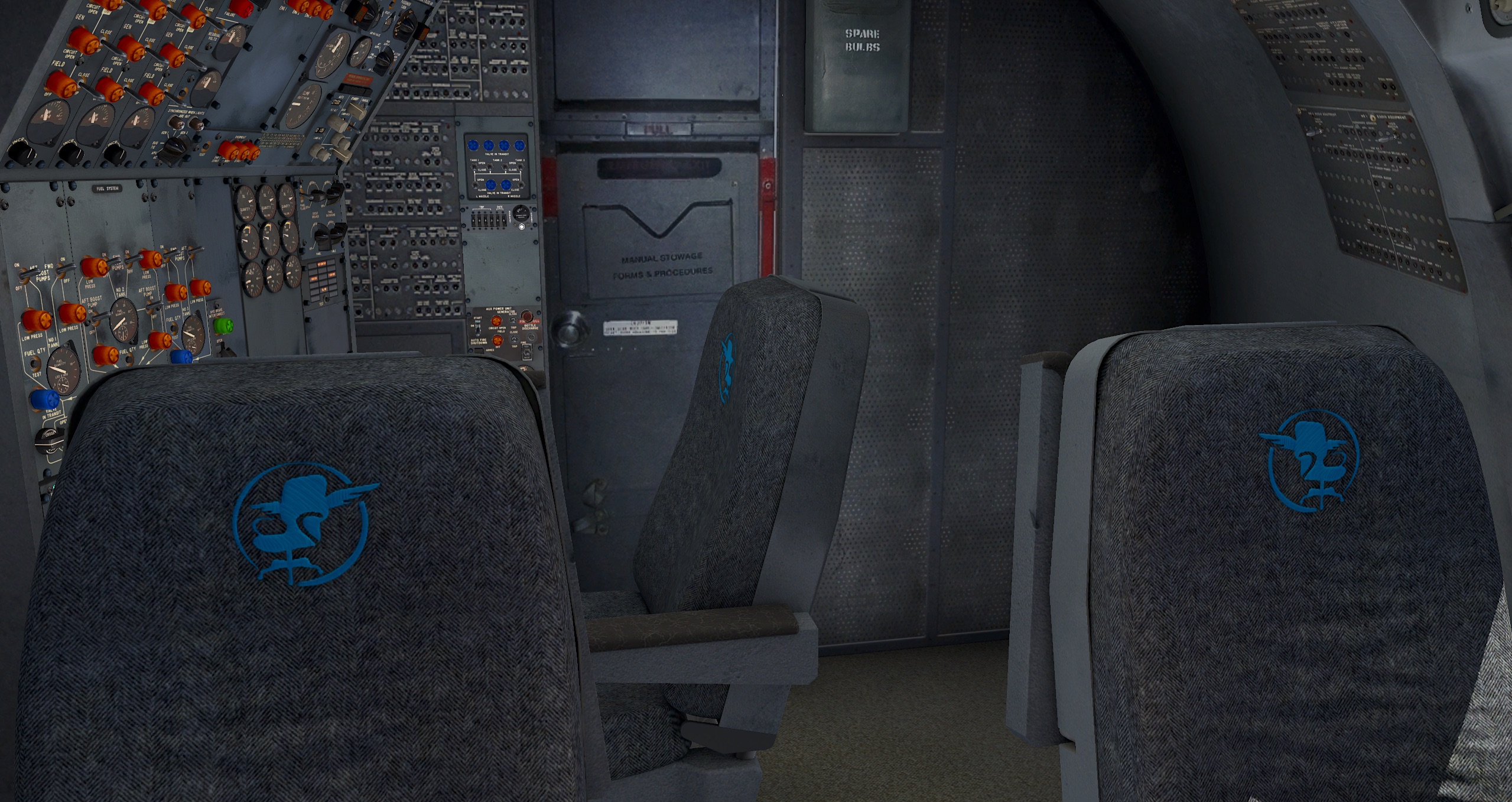
Handling
FlyJSim has modeled the delay and sluggishness from the aircraft’s hydraulic actuators and overall, the aircraft handles very smoothly. It is very nice to land and also handles differently depending on the weight and CG of the aircraft. It is also worth noting that these handling characteristics can be seen in the yoke animations too, smoothing them out considerably. Flying a fast aircraft with a T-Tail has its challenges, and the old golden rules of thrust and speed ring in the pilot’s ear….go below 200 knots without flaps and you will have a nasty surprise…the famous full flap killer landing is also there, although not as severe as it was known in real life…either way, don’t try it, this aircraft does not like it.
Menu System
FlyJSim implemented a new menu system for V3 that brings with it a more modern user interface and many new helpful tools consisting of five icons that can be accessed by dragging your cursor to the left side of the screen. The first tab pulls up a Vspeed Card that provides you with Vspeeds for takeoff and landing, recommended engine performance settings, various weights, and trim settings. The next tab lets you view and set various weight and balance settings. The third tab lets you select the way you want the aircraft configured. You edit volume settings, select what units various values are in, pick what system you want to use for navigation (FMS, VOR, CIVA). The next tab controls the maintenance system and references the status or damage of different parts of the airplane. The maintenance system itself is not the best in my opinion. It lacks the fidelity needed to make me want to keep it turned on since it doesn’t take much to damage something. For example, if I give the aircraft full power for a minute or so the engines are going to catch on fire abruptly. Considering the famous low spool rate of the JT-8D engines, maybe this effect can be toned down a little? Because of this, I think this is more of a gimmicky feature that isn’t needed. But, it certainly doesn't take away from the rest of the aircraft since it can be turned off. The last tab has a simple checklist. I love how handy it is to access and it certainly helps if you are unsure about a procedure or flow.
Conclusion
Looking at the visuals and sounds of the 727, I can say the texture work and the sounds are very well done. They complement the product well and achieve the required effect However, the 3d modeling leaves some things to be desired - Personally, I don’t think the team was wise to leave the exterior model in this state as it continues to carry the many small, but important recurring issues that I addressed above.
I believe, with the release of a major new version, developers should significantly up the ante in modeling or at least refine the existing model. I really want to stress that these issues may seem small and somewhat picky but they do add up to considerably affect the visual quality of the 727 so I think it’s safe to say that there is some room for improvement.
But the 727 is a “classic”….and the old iron jets are all about the systems. FlyJSim did a solid job modeling the different operational aspects of the aircraft in considerable detail. In this category, the team certainly did very well and it is safe to say FJS has the lead in the X-Plane Classic Airliner market!
FlyJSim 727: LINK
Share this page
COMMENT ADVISORY:
Threshold encourages informed discussion and debate - though this can only happen if all commenters remain civil when voicing their opinions.




